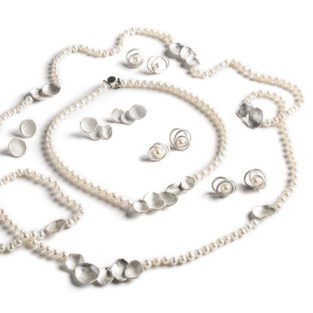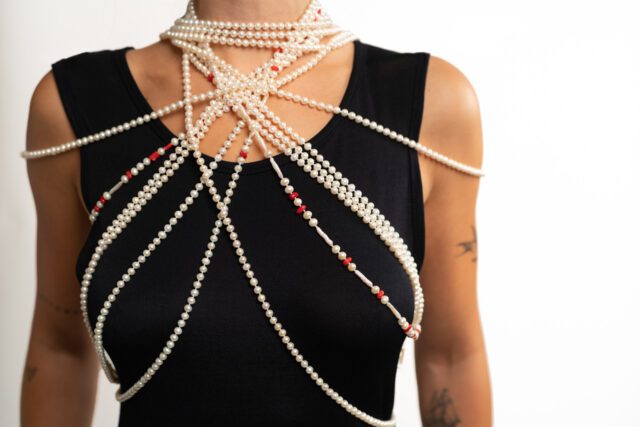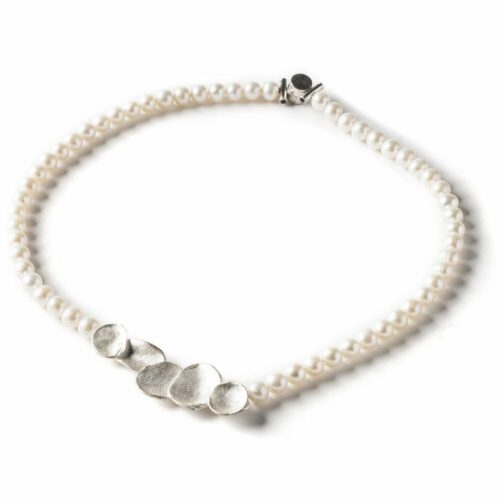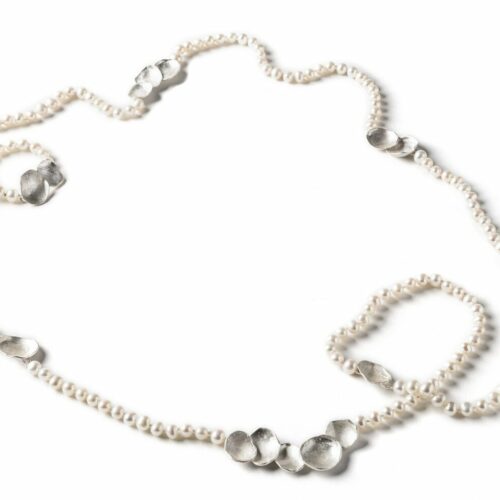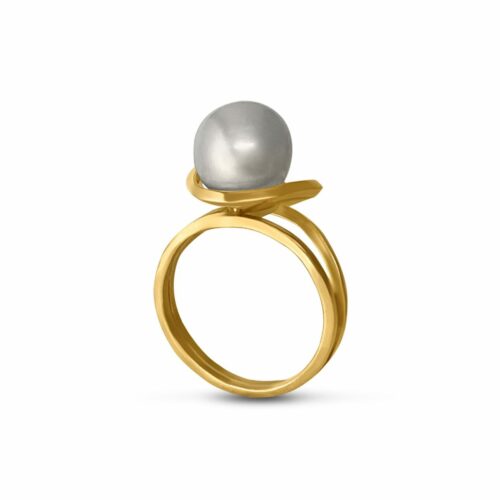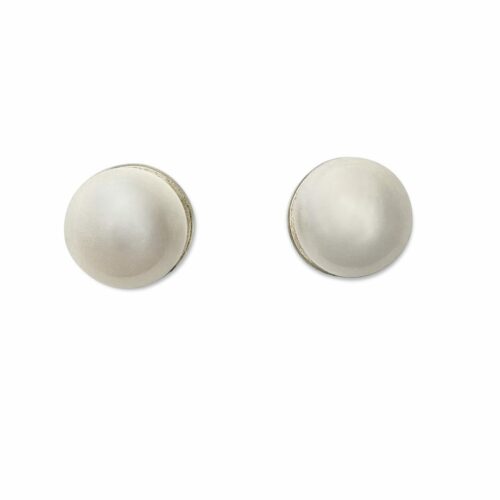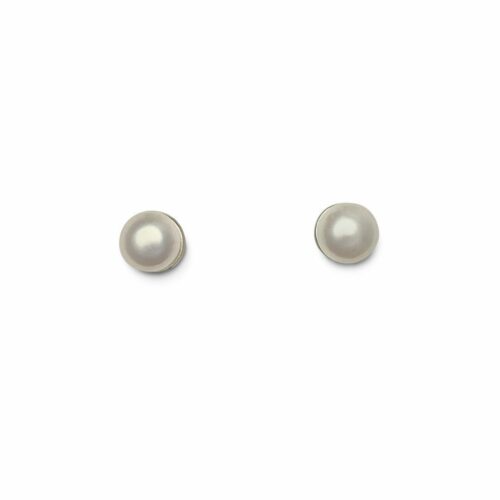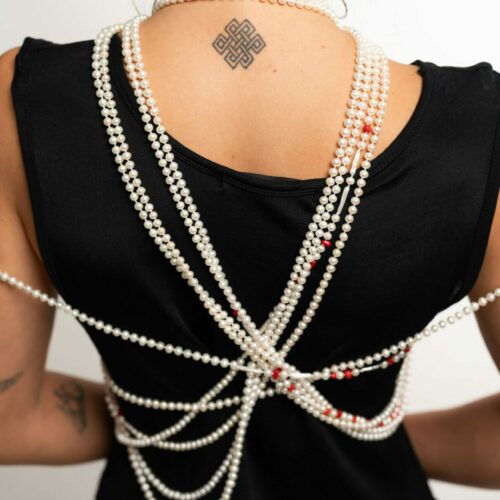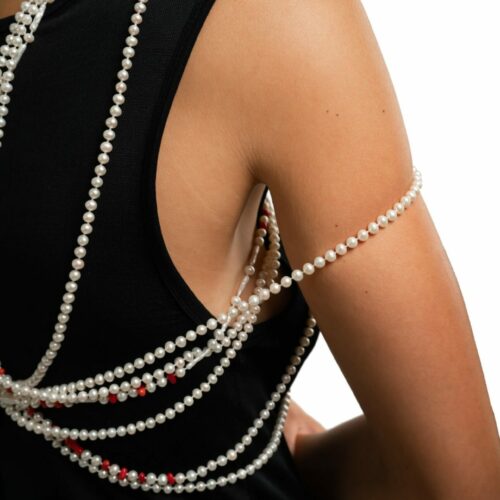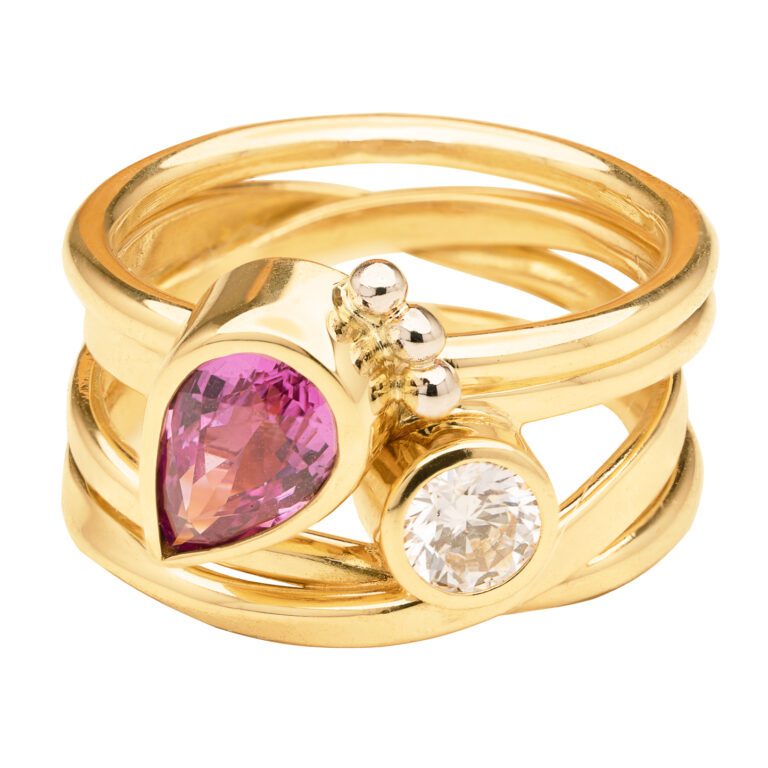Expert advice with Dorothée Rosen

Pearls An Introduction
About a year ago, I started working again with pearls, and launched a new pearl series, so I thought this would be a good time to briefly discuss these amazing gems.
Watch the videos:
Salt Water vs Fresh Water
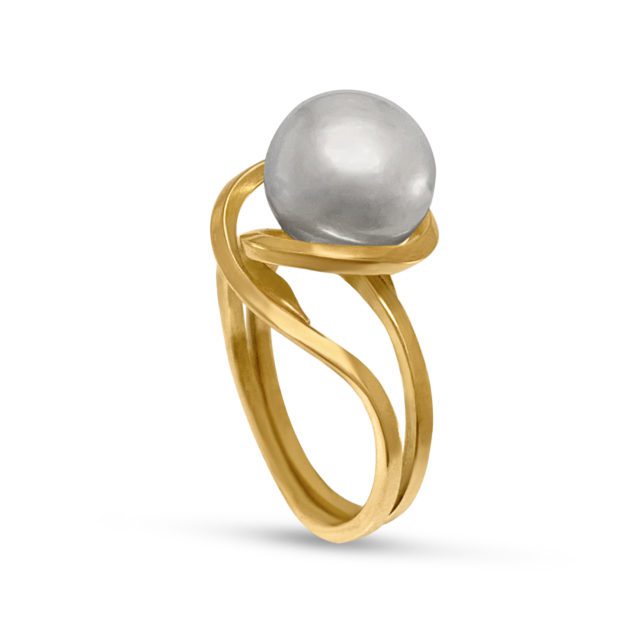 There is a marked difference in rarity and therefore price between various types of pearls. For simplicity’s sake today, let’s just differentiate between Saltwater Pearls (such as SouthSea and Akoya pearls), which come from oysters in ocean water, and Freshwater Pearls found in mussels in rivers, lakes or ponds. The former will fetch a much higher price, mainly because a mussel in a lake can produce up to 40 pearls in one harvest, whereas an oyster will yield one or maybe two pearls in a season – makes sense. Saltwater oysters produce 1 to 2 pearls per nucleation.
There is a marked difference in rarity and therefore price between various types of pearls. For simplicity’s sake today, let’s just differentiate between Saltwater Pearls (such as SouthSea and Akoya pearls), which come from oysters in ocean water, and Freshwater Pearls found in mussels in rivers, lakes or ponds. The former will fetch a much higher price, mainly because a mussel in a lake can produce up to 40 pearls in one harvest, whereas an oyster will yield one or maybe two pearls in a season – makes sense. Saltwater oysters produce 1 to 2 pearls per nucleation.
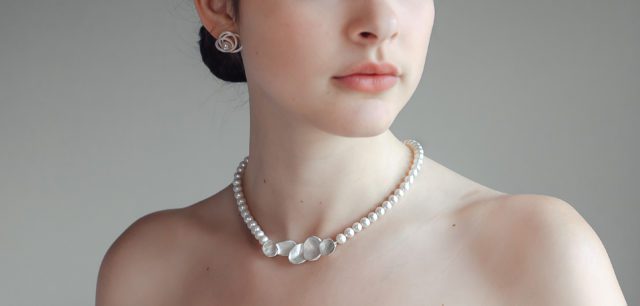
Factors of Appreciation
When appreciating pearls, we look at a few features. Firstly, lustre – does the pearl have a satisfying shine or glow? This is the factor I consider most when choosing pearls for my pieces. How round is it, and of what quality is its surface? Colour, of course, matters a lot – here I speak of natural colour (I will discuss pearl treatments in another article). As jewellers, we would also consider the thickness of the nacre (the iridescent substance which the mollusks secret to form the pearl). This is not so much an issue with freshwater pearls, however. The common concern that a pearl might be fragile stems from a time when most pearls were salt water pearls. Today’s freshwater pearls are quite strong (except for their surface, see below).
Treatment
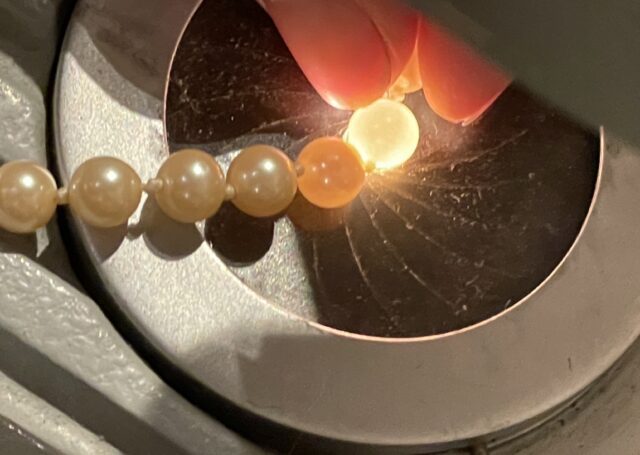
Natural vs cultured pearls, the treatment of pearls, and how to distinguish imitation pearls are such big topics that I will devote another article to them some time.
Caring for Pearls

Pearls are composed of about 2-4% water; therefore, they can become dehydrated. Thus, storing them near heaters or in sunlight is not recommended. Did you know that your safety deposit box presents an unusually dry environment? Not the best place for pearls, at all. Do not store yours in a bank.
It’s better to wear them! Just take good care of them:
first of all, please don’t wear your pearls while applying cosmetics, showering or swimming in chlorinated water. After you wear them, simply wipe your strand off with a dry or damp soft cloth. This will remove perspiration, which can be slightly acidic and harm the pearl’s surface. If this hasn’t been done in a long time, you could use a bath of mild soapy water (nothing as strong as Dawn!), or a Gentle Jewellery Cleaner like the one I sell specifically for this purpose – just never use harsh chemicals.
Lastly, don’t chuck them in your jewellery box along with the rest of your jewellery – metals are much harder than the nacre of pearls, and pearls will easily be damaged by sterling silver or karat gold. Do however wear your pearl any old day, whether with jeans or a fancy gown.
Fun Facts about Pearls
• one of the very first step a pearl goes through after being removed from the mollusk, is carefully being tumbled with salt to remove residue and odour
• Which is hardest: a pearl, an opal, or a tooth? (answer at the bottom of the page*)
What else would you like to read about? Drop me a line or give me a call if there is something about goldsmithing which you’d like to find out more about. I will be delighted to share.
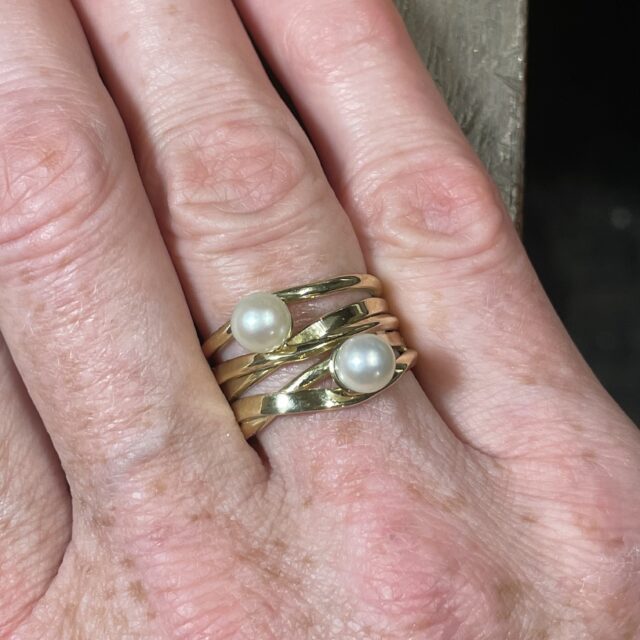
Interested in creating a unique piece, an engagement ring, or any kind of other creation? Contact me about your own custom project!
*opal is the hardest at 5.5-6.5 hardness, tooth enamel is next at 5, and pearl comes in at 2.5-4
Shop MoonPearl Series >
-
Transmit Pearl & Coral Necklace || CONNECTION
$1,400.00 -
Transmit Pearl & Coral Necklace || LONELY
$1,400.00 -
Transmit Pearl & Coral Necklace || LOVE ME
$1,400.00 -
Transmit Pearl & Coral Necklace || ME ME ME
$1,400.00

